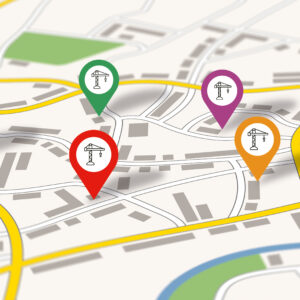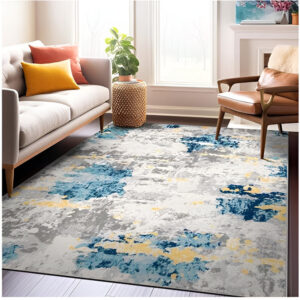In the fiercely competitive world of specialty coffee, where aroma and taste are paramount, the first sensory experience a customer often has isn’t the brew itself – it’s the packaging. Your bag isn’t just a container; it’s a billboard, a storyteller, and a crucial conversion tool. But how do you ensure your meticulously crafted design translates perfectly from screen to shelf? Enter the indispensable coffee packaging mockup.
A coffee packaging mockup is a realistic, digital or physical representation of your designed packaging applied to a simulated bag, box, tin, or pouch. It’s the bridge between your creative vision and the tangible product consumers will hold, see, and ultimately judge. Far from being just a “nice-to-have,” mockups are a strategic necessity for any coffee brand serious about standing out and succeeding.

Why Mockups Matter: More Than Just a Pretty Picture
-
Visualizing Reality: Screen designs live in a flat, perfect world. Mockups bring them into the 3D realm, showing how graphics wrap around corners, how textures interact with light, how seals and closures look, and how the overall shape impacts the design’s flow. Does your intricate illustration get lost in the folds? Does the font size become illegible on the curved surface? Mockups reveal these issues before costly printing runs.
-
Precision Proofing: They are the ultimate proofing tool. Scrutinize color accuracy (how does that specific Pantone brown look on kraft paper?), typography alignment (is the roast date perfectly centered?), barcode placement, and legal compliance text size. Catching a misplaced comma or a misaligned logo here saves thousands in reprints later.
-
Stakeholder Communication & Buy-In: Trying to explain your vision to investors, retailers, or team members using just flat design files is challenging. A photorealistic mockup instantly communicates the final product’s look and feel, generating excitement and facilitating faster, more confident approvals. It transforms abstract concepts into concrete expectations.
-
Marketing & Sales Powerhouse: High-quality mockups are marketing gold. Use them on your website, social media (Instagram thrives on beautiful product shots!), wholesale catalogs, email campaigns, and pitch decks long before you have physical inventory. They create buzz, establish brand presence, and allow you to start selling visually immediately.
-
Design Iteration & Refinement: Mockups allow for rapid, cost-effective experimentation. Want to see how switching from matte to gloss laminate affects the vibe? Or how a different background color impacts the overall aesthetic? Generate multiple mockup variations quickly to compare and refine without committing to physical prototypes each time.
-
Consumer Testing (Conceptual): While not a substitute for holding the actual bag, mockups can be used in early-stage focus groups or surveys to gauge initial consumer reactions to different design directions, colors, or messaging on the packaging format itself.
Types of Coffee Packaging Mockups:
-
Digital (2D/3D): The most common and versatile. Created using graphic design software (like Adobe Photoshop, Illustrator) with smart object layers or specialized mockup generators/plugins (like Placeit, Smartmockups, Mockup World). These allow you to easily drag-and-drop your design onto pre-built bag templates. 3D mockups offer rotation and perspective views.
-
Physical Prototypes: Actual printed samples on the intended material. Crucial for final sign-off, especially when assessing tactile elements (embossing, debossing, spot UV, specific paper stocks) and structural integrity. More expensive and time-consuming than digital, but essential for the final step before mass production.
The Mockup Creation Process:
-
Finalize Your Design: Have your packaging artwork complete, with proper bleeds, trim marks, and all necessary elements (front, back, sides, top/bottom if applicable).
-
Choose Your Mockup Style: Select a mockup template that matches your actual bag type (stand-up pouch, flat-bottom bag, Doypack, box, tin) and desired setting/angle (shelf view, hand-holding, tabletop, lifestyle background).
-
Apply Your Design: Using digital tools, place your artwork files onto the designated smart layers within the mockup template file.
-
Customize (Optional): Adjust lighting, shadows, background, or perspective if the template allows for deeper editing.
-
Review & Refine: Critically examine the mockup. Does everything look as intended? Are there any unexpected distortions or clashes? Get feedback.
-
Generate & Utilize: Export high-resolution images for your various marketing and production needs.
Investing Wisely: The ROI of Mockups
While there are free mockup resources available, investing in high-quality, customizable mockup templates or services pays dividends. Premium mockups often offer:
-
Superior Realism: Better lighting, shadows, textures, and material representation.
-
Greater Flexibility: More angles, backgrounds, and customization options.
-
Specificity: Templates tailored to exact bag styles and materials (e.g., specific gusset types, valve placements, kraft paper textures).
-
Time Savings: Well-built templates are easier and faster to work with.
The cost of a few premium mockup templates is negligible compared to the cost of a botched print run or the lost sales from underwhelming packaging. Think of mockups as essential insurance for your brand’s visual identity and market entry.
Conclusion:
In the crowded coffee aisle, where milliseconds count in capturing consumer attention, your packaging is your silent salesperson. Coffee packaging mockups are not merely a final step; they are a strategic tool woven throughout the design, production, and marketing process. They eliminate costly guesswork, empower confident decision-making, and provide the visual assets needed to launch and promote your brand effectively. By harnessing the power of realistic mockups, you transform your packaging from a simple vessel into a compelling, conversion-driven asset that truly does justice to the exceptional coffee inside. Don’t let your beans be let down by their bag – mock it up first!
5 FAQs About Coffee Packaging Mockups
1. What’s the difference between a coffee packaging mockup and just a photo of a bag?
-
Mockup: A template designed specifically for designers to insert their own artwork. It uses smart layers (usually in PSD files) that allow your design to warp, shadow, and reflect realistically onto the 3D bag structure. You control the design.
-
Photo: A static image of an existing, already-printed coffee bag. You cannot change the design on the bag itself; you can only use the photo as-is or overlay graphics awkwardly. Mockups provide flexibility and customization for your unique design.
2. I have a unique bag shape/size/material. Can I still get a mockup?
-
Digital Mockups: You may find templates for common, unique shapes (such as flat-bottom gusseted bags), but highly unusual, custom structures can be more challenging. Options include:
-
Search extensively: Specialized mockup marketplaces often have niche options.
-
Commission a custom mockup: A graphic designer can create a bespoke 3D model and mockup template specifically for your bag, though this is more expensive.
-
Use a similar template: Find the closest match and acknowledge it’s an approximation for marketing purposes (not final proofing).
-
-
Physical Mockups: This is the best solution for truly unique packaging. Work with your packaging supplier or a prototype company to create actual printed samples on your chosen material. Essential for final sign-off on custom designs.
3. How detailed can I make my digital mockup? Can I show special finishes?
-
Basic Finishes: Most digital mockups effectively display matte, gloss, and uncoated (kraft) finishes because the template’s texture and lighting are pre-baked.
-
Special Finishes (Embossing, Debossing, Spot UV, Foil): Showing these realistically digitally is more advanced:
-
Premium Templates: Some high-end mockups are specifically created to showcase these effects, using bump/normal maps and sophisticated lighting.
-
Manual Editing: Skilled designers can add realistic highlights and shadows in Photoshop to simulate raised or shiny areas based on their artwork’s finish layers.
-
Limitation: While digital can suggest the effect, it cannot perfectly replicate the precise tactile feel. Physical prototypes are crucial for verifying the execution of complex special finishes.
-
4. How many mockup variations do I need?
-
Essential: At minimum, you need high-quality mockups of the primary view (front focus) for your main marketing channels (website, social media).
-
Recommended:
-
Front & Back: Shows the complete information.
-
Shelf View: Simulates how it looks alongside competitors (crucial for retail).
-
*Angle View (e.g., 3/4 view):* Adds depth and dimension.
-
Lifestyle Shot: Places the bag in a context (e.g., on a kitchen counter, with a mug) to evoke a feeling.
-
-
Nice-to-Have: Close-ups of details, different background options (light/dark), variations showing different coffee flavors/roasts if applicable. Start with essentials and expand as your budget allows.
5. Where’s the best place to find good coffee packaging mockups?
-
Premium Online Marketplaces:
-
Creative Market
-
Envato Elements (subscription)
-
Design Cuts
-
Mockup World (mix of free and premium)
-
Placeit (easy online generator, subscription)
-
-
Specialized Mockup Providers: Some designers/studios focus solely on creating high-quality, niche mockups. Search for “premium packaging mockups” or “coffee bag mockup templates.”
-
Free Resources: Mockup World, Behance (search “free coffee mockup”), FreePik, Pixeden. Be prepared to spend more time exploring and potentially compromising on quality/realism compared to paid options. Always check licenses for commercial use.
-
Packaging Suppliers: Some bag manufacturers offer basic digital mockup services using their specific templates when you request a quote, which can be a good starting point.




